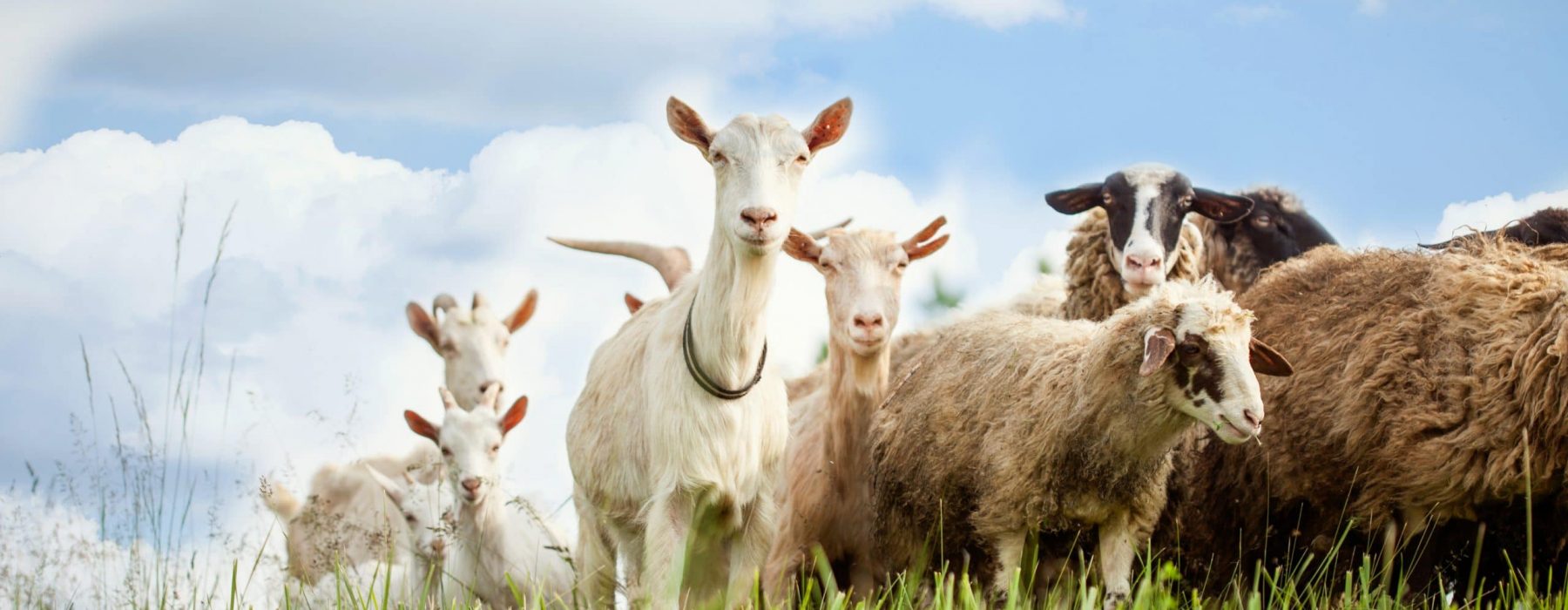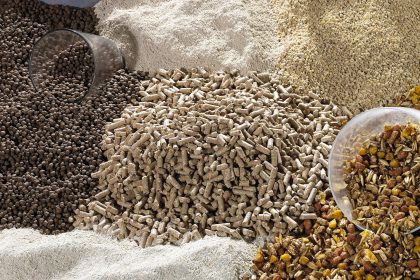As with other animals, goats require one certain type of specific feed and require specific nutrients supply. Key components of the goat diet should be energy, protein, vitamins, minerals, fiber, and water. Different feed products and ingredients can meet a goat’s nutritional requirements, with energy and protein being the key components (and usually both of them are the first limiting) nutrient.
Goat Care and Nutrition
Goats are not sheep
Sheep and goats are often lumped together, probably because of their similar size and somewhat similar appearance. However, it is important to know that goats differ greatly from sheep when it comes to nutrition. While they do best on an optimally formulated diet specifically for their purpose, be it dairy or meat goats also like to forage. This is no doubt the reason they have a reputation for being able to eat anything! However, a goat’s grazing preferences vary greatly from that of a sheep, and even are different from a cow.
Goats are very demanding in protein to fully express their production potential. In addition, they are animals that are very sensitive to certain metabolic diseases, in particular acidosis and pregnancy toxemia. It is essential to ensure a satisfactory and sufficient fiber supply of the ration. Otherwise, major disorders may appear.
Enterotoxemia in goats
Enterotoxemia in goats (also known as overeating disease) is caused by two strains of bacteria called Clostridium perfringens – the strains are termed types C and D. This disease is a common issue in both sheep and goats and can affect animals of all ages. The bacteria responsible for this disease exist in the animal’s digestive tract in relatively harmless numbers at all times. During a change in feed or another disruptive episode, the bacteria flourish and grow, and produce a toxin as they do so. These toxins harm the digestive tract as well as the organs of the animal, and in unvaccinated animals can lead to death.
The good news is that there is a vaccination for enterotoxemia. Animals on lush grass or rich diets may need to be vaccinated more frequently than those who are not. There are also several feeding plans that can be put in place to help reduce the risk of enteotoxemia.
Limit rich feedstuffs as much as possible. This includes fresh and rich green grass, high starch feeds. Divide feedings into multiple small meals per day instead of one large meal. This will lessen the chance of overwhelming the digestive tract and giving the bacteria a chance to populate. Finally, make any feed changes gradually and over a period of many days. If you are changing feeds, start with a small portion of the new feed along with the old. Each day gradually increase the portion of new feed and decrease the old until the feed is completely changed. Watch for negative reactions during this time. The process of changing a feed should take at least 15 days.
We can help farmers and feedmillers
According to your ruminant project and needs we can help you improve all areas of your production system. Our formulation, ruminant nutrition expertise, farm & industrial technical supports help to optimize your ruminant production, and we help you to improve and monitor your economic results. We help to optimize your operation by providing ways to secure your production. We work with you on raw materials sourcing, specific control plans, finished products evaluation.

